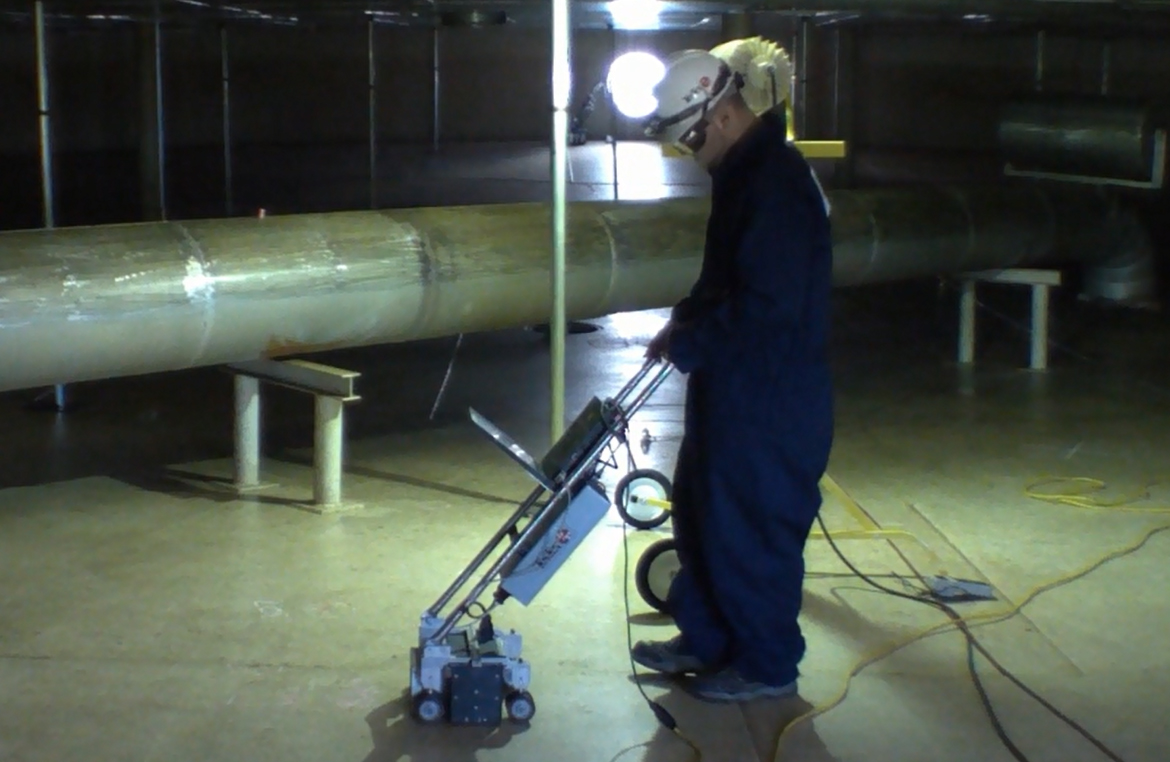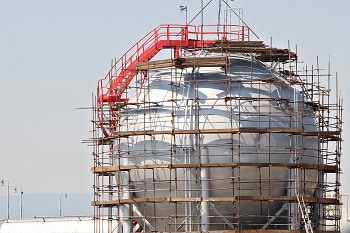Advanced Techniques in Modern Tank Welding Inspection
A Comprehensive Overview of Container Welding Evaluation Standards and Methodologies for Improved Weld Quality and Efficiency
The significance of welding examination requirements in the production of containers can not be overemphasized, as they offer as the backbone for making certain weld honesty and operational integrity. Different evaluation techniques, consisting of aesthetic evaluations and advanced non-destructive screening methods, are vital in identifying possible defects that could endanger performance.
Relevance of Welding Examination Criteria

Welding assessment requirements encompass a range of standards, consisting of material requirements, welding treatments, and qualifications of workers associated with the welding process. By imposing these standards, companies can systematically recognize and rectify prospective defects, therefore minimizing the chance of expensive repair work or devastating failures. Rigorous assessment techniques promote a society of accountability and precision, motivating welders to keep high degrees of workmanship.

Typical Welding Assessment Techniques


Ultrasonic Evaluating (UT) is an additional prevalent technique, utilizing high-frequency sound waves to detect inner flaws that may not be noticeable on the surface. This method is especially efficient for recognizing spaces or inclusions within the weld metal. Magnetic Bit Testing (MT) is likewise extensively made use of, especially for ferromagnetic materials, as it exposes surface area and near-surface defects via the application of electromagnetic fields and ferrous bits.
In Addition, Fluid Penetrant Testing (PT) identifies surface-breaking issues by using a penetrant to the weld and afterwards using a designer to extract the penetrant. Each of these methods adds to an extensive examination technique, making sure that welds fulfill the strict top quality criteria required in storage tank building.
Regulative Requirements and Conformity
Regulatory standards and conformity are necessary components in ensuring the blog here security and integrity of welded frameworks in container building and construction - Tank Welding Inspection. These requirements offer to develop minimum needs for product residential or commercial properties, welding treatments, and evaluation practices, thus minimizing the risk of structural failures and improving total efficiency
Trick organizations, such as the American Culture of Mechanical Designers (ASME) and the American Welding Culture (AWS), supply standards that are commonly adopted in the industry. Conformity with these standards not only ensures adherence to ideal practices but additionally fulfills lawful and legal commitments, safeguarding the interests of stakeholders.
Regulative bodies usually mandate adherence to details codes, such as ASME Code Area IX for welding certifications and API 650 for bonded containers. These codes describe demands for welding methods, qualifications of personnel, and testing approaches to validate weld stability.
Normal audits and assessments are important to preserving compliance, as they assist identify deviations from developed requirements. Non-compliance can lead to significant penalties, job hold-ups, and security threats. Thus, a durable understanding of governing requirements and a commitment to conformity are vital in accomplishing top quality and durable bonded tank structures.
Non-Destructive Examining Methods
Just how can the integrity of bonded structures be assured without creating damage? Non-destructive testing (NDT) approaches supply a durable solution, allowing assessors to examine weld quality without endangering the product - Tank Welding Inspection. Amongst one of the most common NDT strategies are ultrasonic testing (UT), radiographic testing (RT), magnetic particle testing (MT), and color penetrant screening (PT)
Ultrasonic testing utilizes high-frequency audio waves to find inner go to this web-site defects and identify material buildings. It provides accurate measurements and is specifically efficient for thick products. Radiographic screening involves passing X-rays or gamma rays through the weld, producing photos that disclose architectural defects such as fractures or spaces. This approach is important for evaluating the stability of complex welds.
Magnetic fragment testing is matched for ferromagnetic materials, where magnetic fields expose surface and near-surface gaps. Dye penetrant testing makes use of a fluid color to highlight surface-breaking problems, making it an effective method for non-porous products.
Each of these NDT techniques has unique advantages, permitting comprehensive analyses official source customized to details materials and welding procedures. By carrying out these methods, markets can make sure the integrity and safety and security of bonded frameworks, ultimately improving total performance.
Enhancing Weld High Quality With Examination
Effective evaluation plays a vital duty in boosting weld quality, working as an important checkpoint in the construction procedure. By recognizing possible defects early, evaluations reduce the danger of jeopardized architectural stability and make sure conformity with sector criteria. Using a mix of aesthetic exams, non-destructive screening (NDT) approaches, and mechanical analyses, assessors can identify concerns such as porosity, splits, and insufficient blend.
Carrying out a durable assessment procedure not only enhances the overall quality of welds but also cultivates a society of liability amongst welders and producers. Regular training and certification of inspection personnel make certain that they are outfitted with the essential abilities to acknowledge and address potential troubles successfully. This positive method minimizes rework and linked expenses, eventually contributing to predict effectiveness.
Additionally, comprehensive documents of examination findings provides beneficial understandings into reoccuring problems, helping with continual enhancement in welding practices. By leveraging innovative innovations, such as automated ultrasonic testing or electronic radiography, weld high quality can be enhanced with more exact assessments. To conclude, an extensive inspection procedure is crucial in accomplishing high-quality welds, making sure safety, integrity, and durability in tank construction.
Conclusion
In final thought, the execution of strenuous tank welding evaluation requirements and techniques is essential for guaranteeing weld stability and efficiency. By using a mix of aesthetic examinations, non-destructive testing techniques, and adherence to regulative requirements, companies can properly recognize and minimize potential defects.